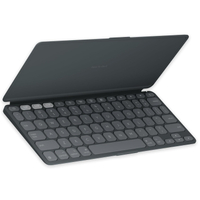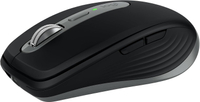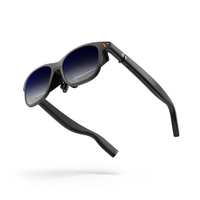I ditched my laptop for the Galaxy Z Fold 6 for 2 weeks — here’s what happened
Samsung DeX is clutch at replicating the desktop PC experience
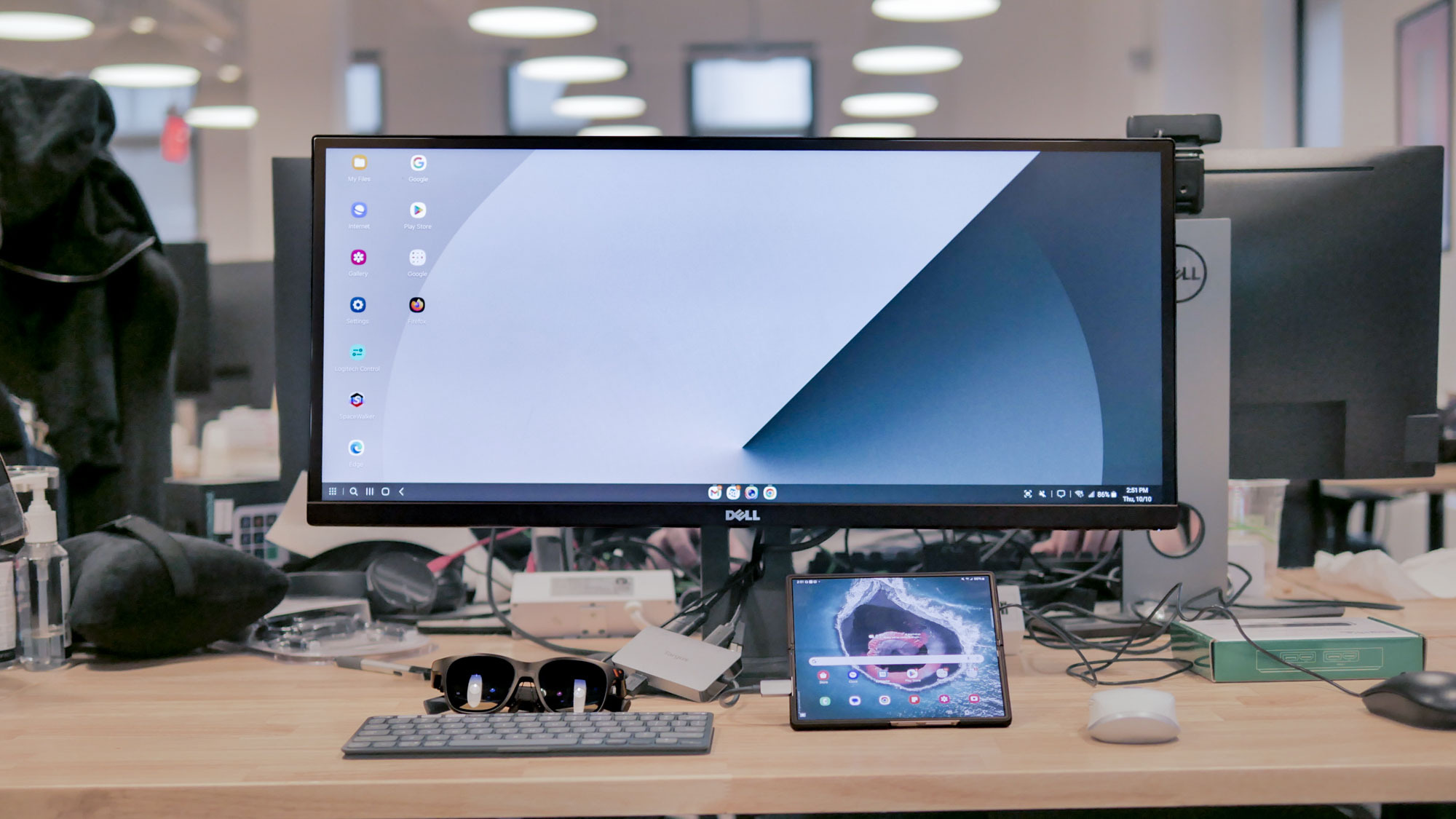
There are plenty of reasons why phones are such prized devices. Everyone you know has one, and while I’d argue that the innovations have stalled a bit the last several years, foldable phones like the Galaxy Z Fold 6 continue to breathe in new life for the segment. Ever since I got my hands on my first smartphone, an HTC Apache with a slide out QWERTY keyboard, I was envisioning a day when I would be able to ditch my laptop entirely and make my phone the single device I’d lean on.
Well, that’s the reality we’re at now with the Galaxy Z Fold 6 and how it can offer this experience I’ve been asking for. With its sprawling screen and new Galaxy AI features, it’s every bit of being worthy in our best foldable phones guide. But while this idea of a phone being a laptop replacement isn’t new, I thought I’d give it a shot with Samsung’s latest foldable phone.
After trying it out for two weeks by doing most of my work with the Galaxy Z Fold 6, I think there’s still room for improvement — but I’ll admit there could be a day when I stop using my laptop entirely. Before I get into that and my experience, I’ll share what I’ve been using to turn the Galaxy Z Fold 6 into my laptop replacement.
Samsung Galaxy Z Fold 6 accessories I used
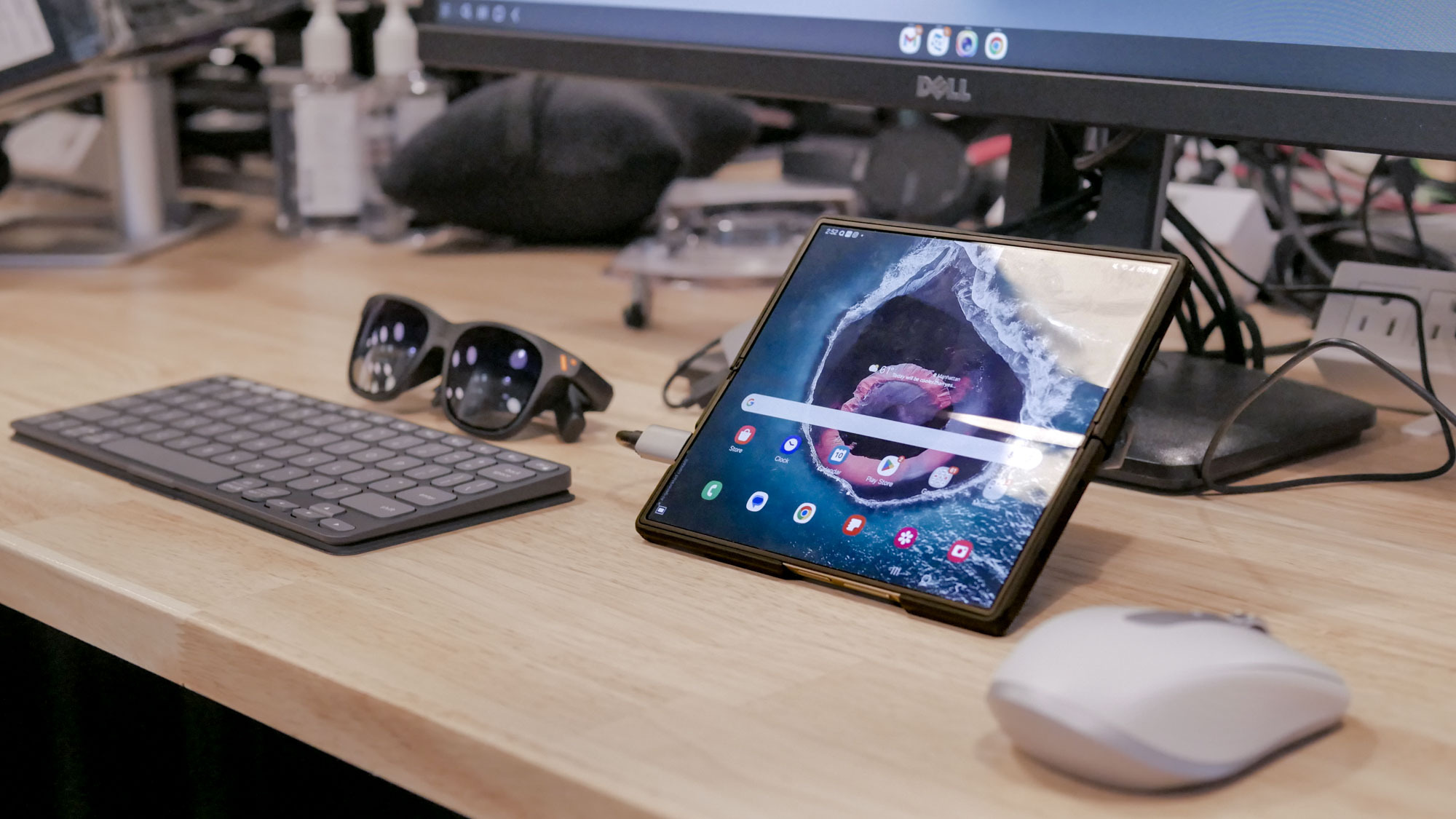
First and foremost, I needed a case that would allow the Galaxy Z Fold 6 to stand on its own while using Samsung DeX — while also giving it protection against drops and other things I put my phones through. From our best Samsung Galaxy Z Fold 6 cases guide, Spigen’s Tough Armor Pro P case checks off all the marks, complete with a kickstand and a hidden compartment to stow away my S Pen.
Spigen Tough Armor Pro P: was $89 now $75 @ Amazon
With its tough construction, the Spigen Tough Armor Pro P case for the Galaxy Z Fold 6 offers much needed protection, while also featuring a handy kickstand and compartment for the S Pen.
After that, I paired a Logitech Keys-to-Go 2 and Logitech MX Anywhere 3S for my mouse and keyboard combo. With the Keys-to-Go 2, I love how sleek and lightweight it is, while giving me the tactility I crave typing on a keyboard. Meanwhile, the MX Anywhere 3S is battery powered and small enough to stow away in my backpack. When I’m out and about, this combination lets me work effortlessly on the Galaxy Z Fold 6.
Logitech Keys-to-Go 2: buy now for $79 @ Amazon
I barely notice any additional weight in my backpack with the Logitech Keys-to-Go 2 because of its lightweight feel and slim design. There's also no fussing with having to charge it frequently because its coin battery is rated to last up to 3 years.
Logitech MX Anywhere 3S for Mac: buy now for $79 @ Amazon
Even though it says it's for Mac, the Logitech MX Anywhere 3S for Mac can pair with any Bluetooth device, including my Galaxy Z Fold 6. Not only do I like its compact size, but I can even pair it with up to three devices.
At work, I already have a monitor that connects to my Galaxy Z Fold 6, but I also keep the Viture Pro XR glasses on me wherever I go when I need a larger canvas to do my work when I’m elsewhere. Basically, these glasses act as a portable monitor that I can connect to the Z Fold 6 to watch videos and do my work all privately — but with a much larger screen.
Viture Pro XR: was $459 now $409 @ Amazon
The Viture Pro XR glasses lets me work in private because of how it's basically like having a physical monitor in front of me. Usually mixed reality glasses are bulky and obnoxious, but I'm amazed by how normal looking they are. And it's also impressively sharp with the details.
Tallying in all the prices of these accessories, including the hefty $1,899 price of the Galaxy Z Fold 6 itself, this setup comes to about $2,541. That’s a staggering cost to replace my laptop, but I’ll mention later on why you don’t really need to spend that much.
Sign up to get the BEST of Tom's Guide direct to your inbox.
Get instant access to breaking news, the hottest reviews, great deals and helpful tips.
Samsung DeX is still underrated
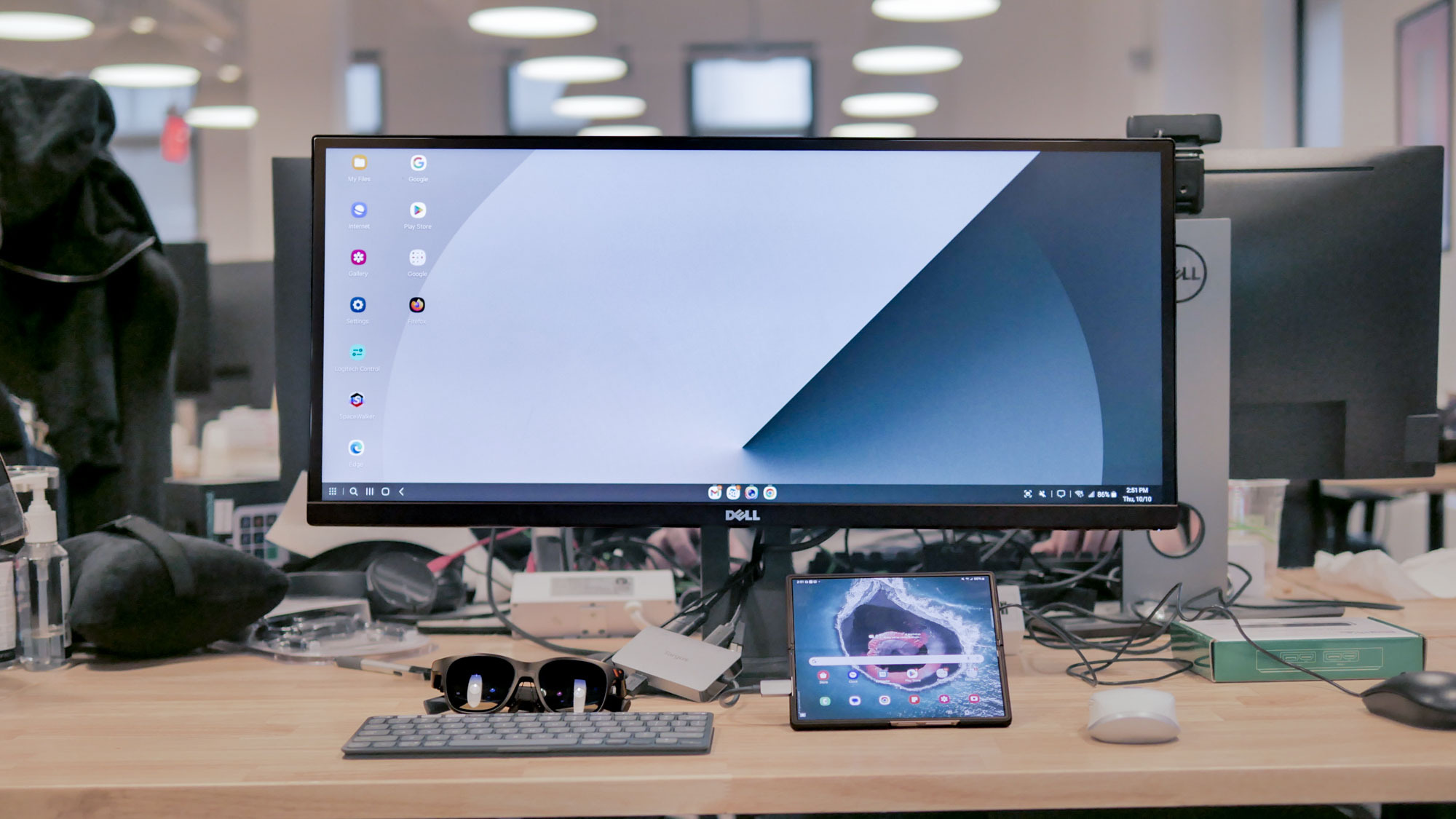
One of the biggest reasons why I opted for the Galaxy Z Fold 6 for this experiment instead of other foldable phones, like the OnePlus Open or Google Pixel 9 Pro Fold, is that Samsung has the closest thing to a desktop-like operating system. Samsung DeX has been around for quite a while now, but I love the convenience of connecting my USB-C dock to my Galaxy Z Fold 6 — which also connects it to a monitor.
Since the interface is similar to my Windows 11 laptop, I find it helpful that I can open up multiple apps and have them run side-by-side to one another. For example, I keep Chrome open on one side and Slack on the other for quick access to them. And just like Windows 11, the layout can change dynamically when I resize the windows for each app.
Many of the native apps are also optimized in DeX, which essentially mimic how they’re generally laid out on Android tablets. Gmail is an excellent example of this because of how it leverages two panes to show me my inbox and the contents of an email. For productivity purposes, the Z Fold 6 certainly gets the job done with Samsung DeX. In fact, I was able to write this entire article with the Galaxy Z Fold 6 and create it in Tom's Guide's content management system.
What the Galaxy Z Fold 6 can’t do
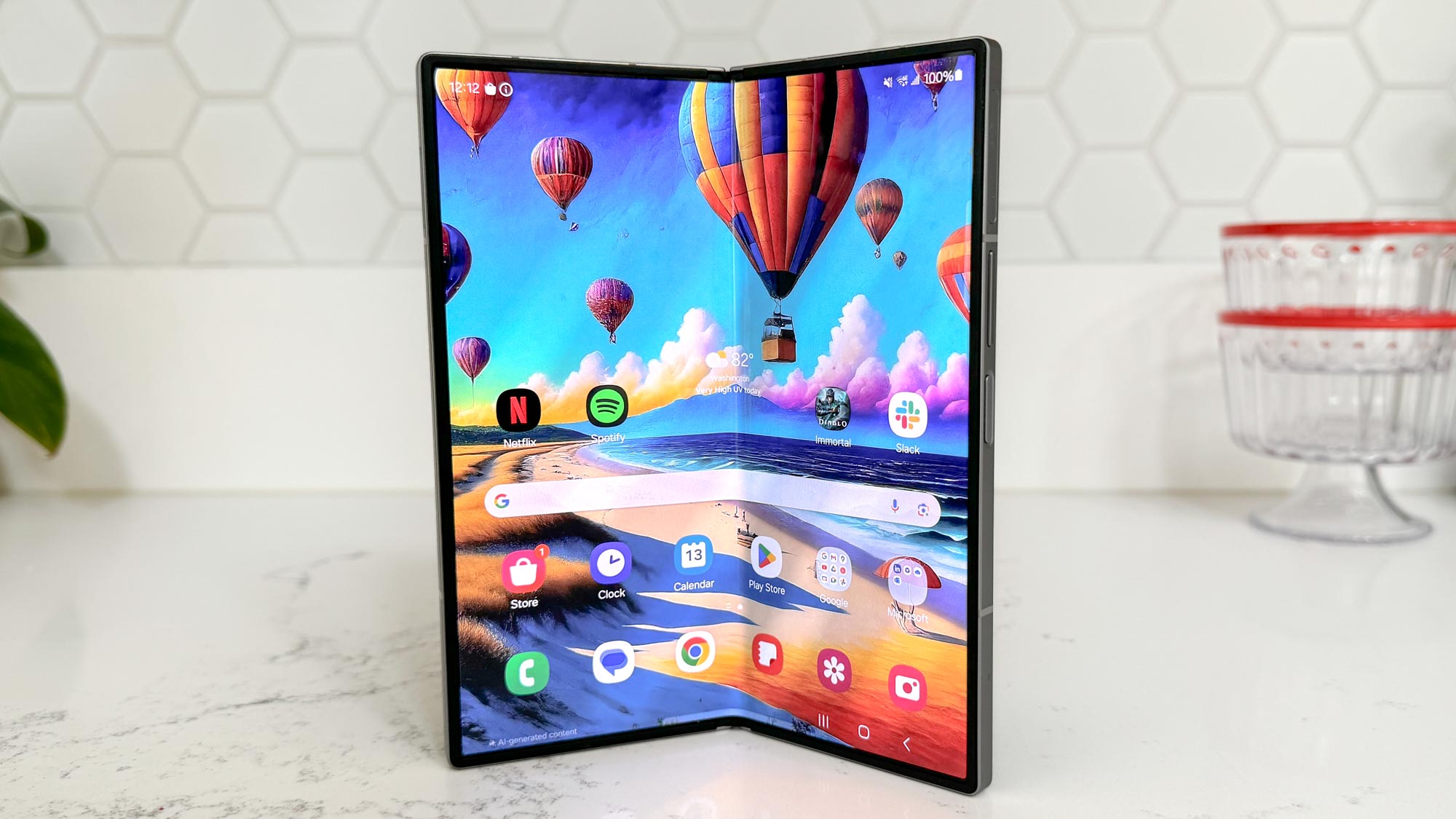
Most of the stuff I do for work functions perfectly with the Galaxy Z Fold 6. One of my biggest complaints is that unlike the desktop version of the Chrome browser, I can’t log into different accounts — which is a pain because my work account has bookmarks I don’t have access to with my personal one.
There are also a bunch of other Chrome extensions that I use on a daily basis for what I do, which I don’t have access to with Chrome for Android. It’s not a huge deal breaker, but it does add more time to tasks as I do some manually instead of turning to the automations that these Chrome extensions offer me.
Photo and video editing also play a huge role with my daily duties at work, and for the most part, I’m able to use apps on my phone to crop and tweak them. But similar to those Chrome extensions, the full-blown versions of these photo and editing apps on my laptop offer access to more features I don’t get with their mobile versions — such as having access to premium transition effects I use with my video editing software, as an example.
Generally speaking, I’m able to work around some of these shortcomings with the experience, but they do take up more time.
Bottom Line
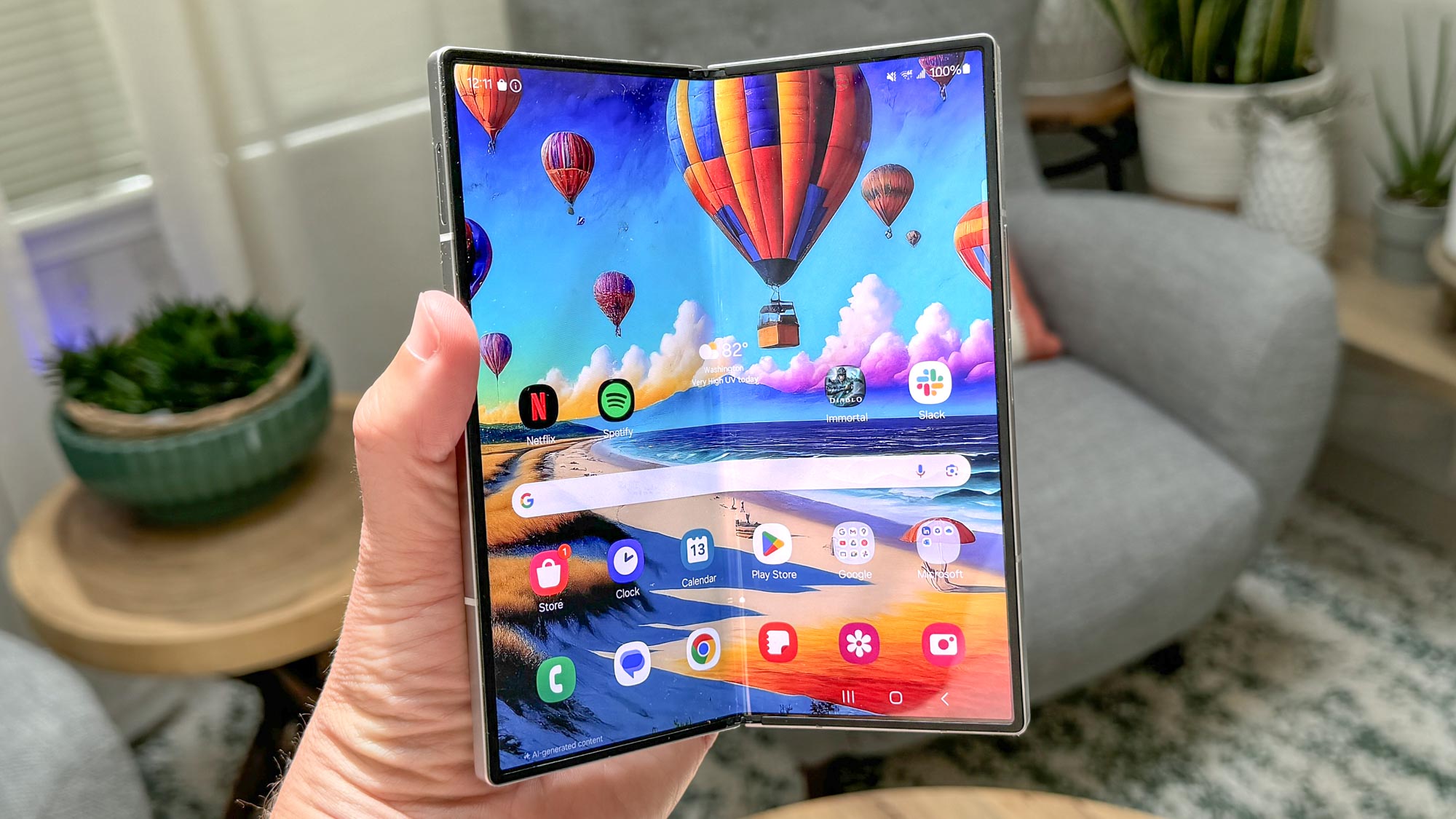
After using the Galaxy Z Fold 6 for 2 weeks as my daily driver, the foldable phone can certainly replace my laptop for work purposes. Best of all, all of the gear in total still comes out to be lighter than carrying around a laptop in my bag — something my back surely appreciates.
At the same time, the cost in doing this just won’t convince people to drop their laptops entirely and switch to a Galaxy Z Fold 6. But hear me out: you don’t have to pay in excess of $2,500 for this setup. That’s because the Samsung DeX is available in a range of Galaxy phones, like the recently announced Galaxy S24 FE, which costs $649. I think that's an incredible value because the S24 FE can offer the same experience as the Galaxy Z Fold 6 in giving me that desktop experience through a phone.
More importantly, I want more phones to offer this out of the box because Samsung’s really the only major player offering this experience — and it’s one that I think is invaluable and shows the true power of today’s best phones. I just hope other device makers like Apple and Google realize this too and come up with a similar experience on their phones.
More from Tom's Guide

John’s a senior editor covering phones for Tom’s Guide. He’s no stranger in this area having covered mobile phones and gadgets since 2008 when he started his career. On top of his editor duties, he’s a seasoned videographer being in front and behind the camera producing YouTube videos. Previously, he held editor roles with PhoneArena, Android Authority, Digital Trends, and SPY. Outside of tech, he enjoys producing mini documentaries and fun social clips for small businesses, enjoying the beach life at the Jersey Shore, and recently becoming a first time homeowner.


